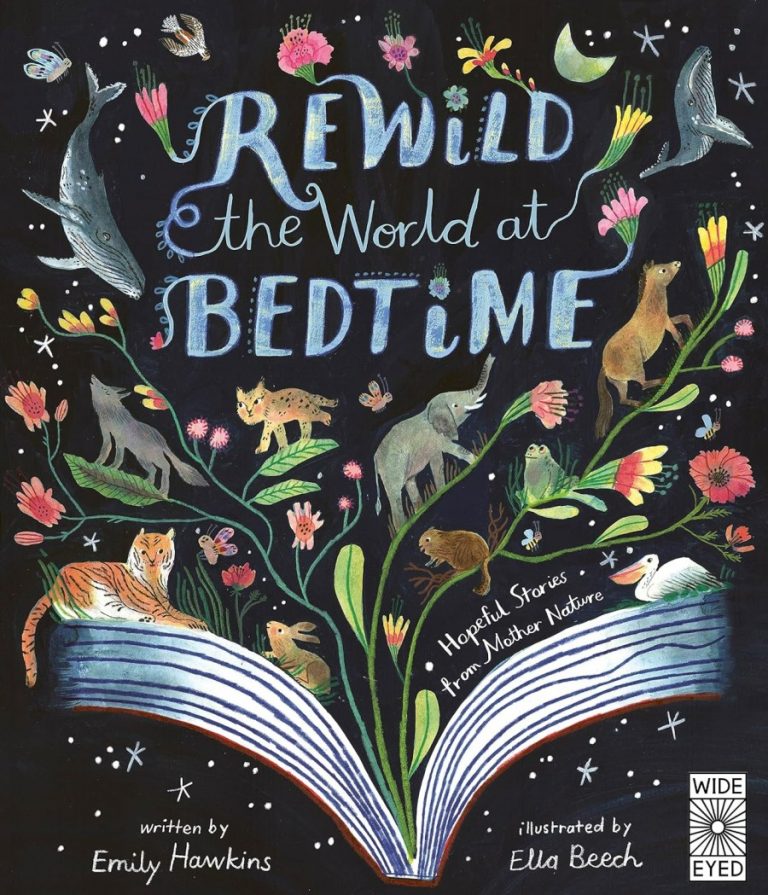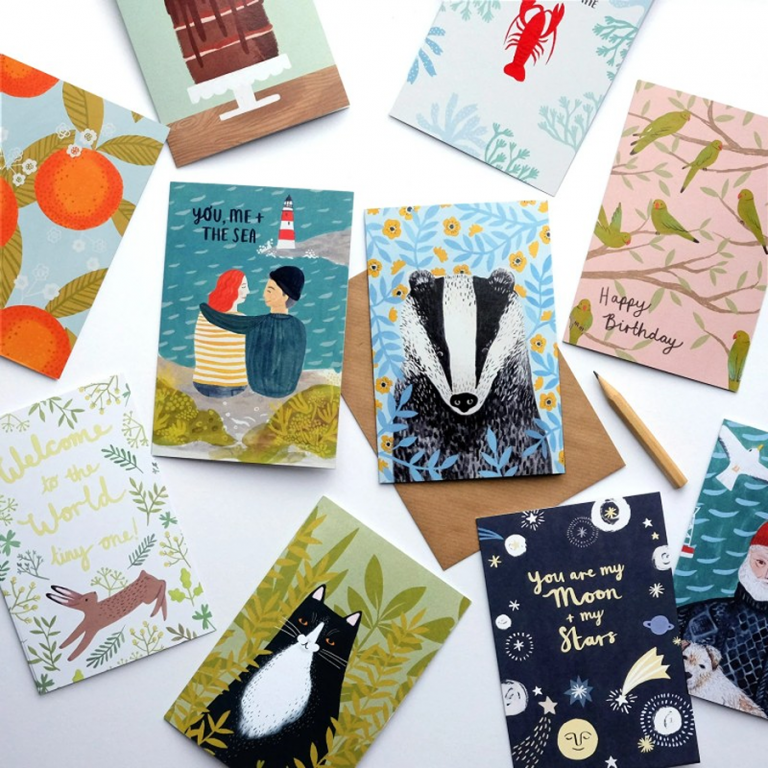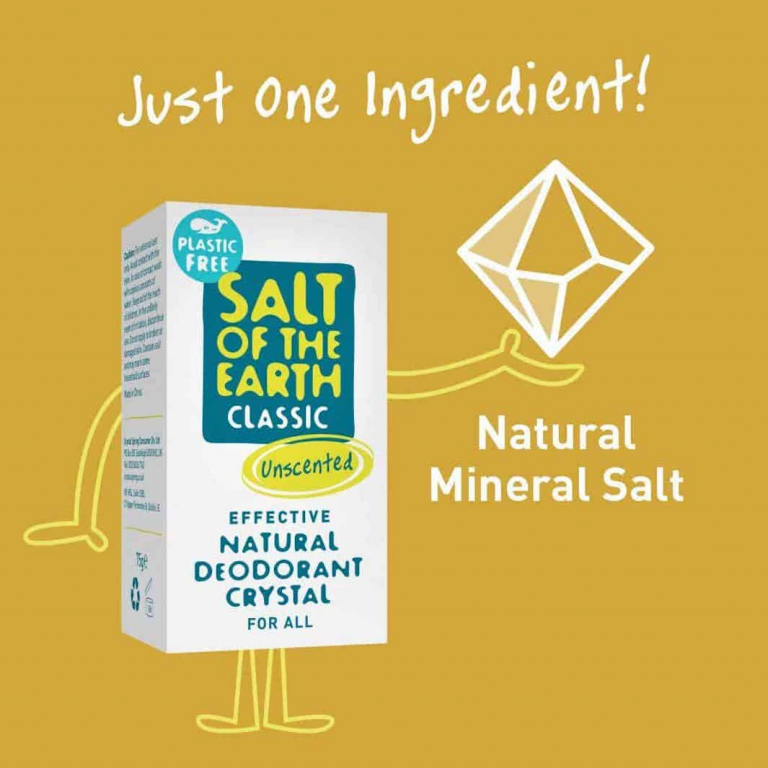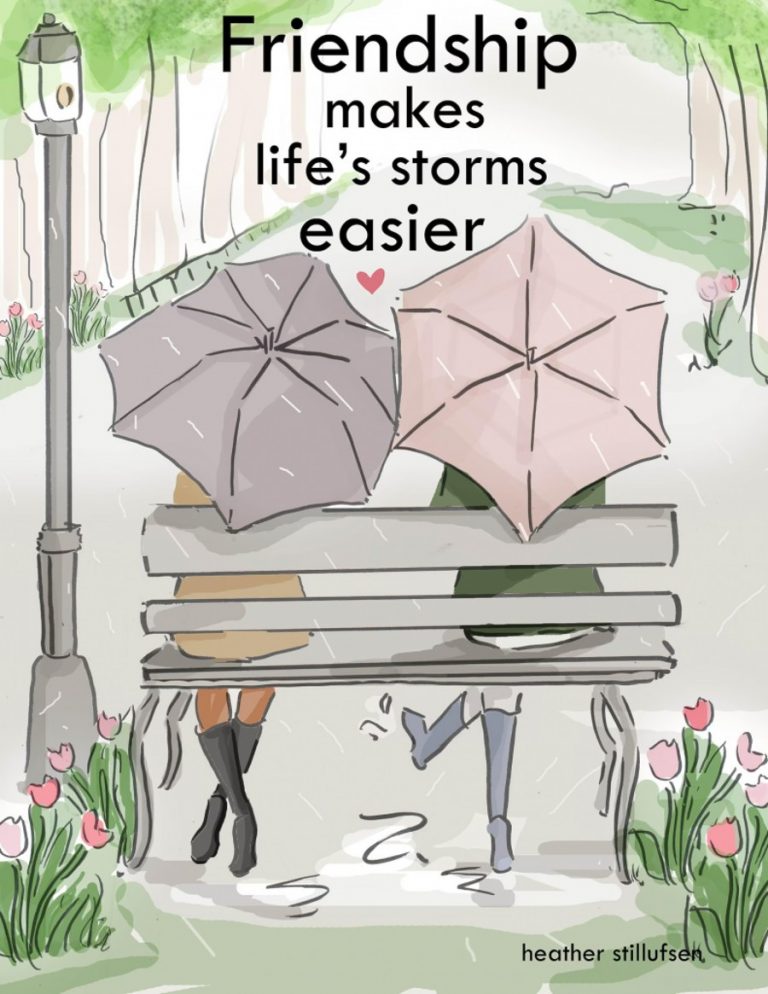
Every day, millions of plastic pens end up in landfills, polluting soil and water. The average office or school desk sees an endless parade of disposable pens, each with a short life and a long-lasting impact. As more people wake up to plastic pollution, interest grows in sustainable choices for everyday tools – especially writing pens.
Why should we care about which pen we use? Because a greener pen is more than just a writing tool. It’s a small step towards shrinking our plastic footprint and making more mindful choices at work and school.
Keep pens & pencils away from young children & pets. Avoid gifting plantable pens to homes with pets, as many contain wildflowers or herbs that are not safe near animal friends. Learn more on pet-friendly gardens.
The Environmental Impact of Most Pens
The common ballpoint or gel pen hides an ugly secret. Most disposable pens are made mostly or entirely from virgin plastic, a material that takes hundreds of years to break down. Once empty, these pens often end up in landfills where they will outlive their users.
- Materials: Plastic barrels, metal tips, and ink cartridges are the main parts.
- Production: Virgin plastic requires fossil fuel and produces greenhouse gases.
- Waste: Millions are thrown away each day, adding to the mound of single-use plastics.
While a single pen might seem harmless, it’s easy to imagine the waste when you multiply that by hundreds of millions each year worldwide.
Exploring Greener Pen Alternatives
Eco-friendly pens offer better choices for those who want to write responsibly. Today’s green pen market gives you everything from recycled plastic refills to compostable pens.
Here’s a deeper look at the unique features and benefits of each option.
Refillable and Reusable Pens

Refillable pens flip the single-use script. Many come with sturdy bodies made from metal or strong, eco-friendly plastics. Instead of tossing the whole pen, you just swap out the ink cartridge. This can shrink your plastic waste by half or more.
Key benefits:
- Durability: Metal and strong plastic bodies can last for years.
- Cost-effective: Buying refills costs less over time.
- Less waste: Only the tiny cartridge ends up as waste, not the whole pen.
Popular options include stainless steel ballpoints and classic fountain pens. With a refillable pen in your pocket, you can write thousands of pages without tossing a single barrel.
Good Tuesday (a company which makes recycled paper notepads) also sells nice refillable pens to use them with. The range includes:
Kaweko Perkeo Rollerball Pen is an affordable and stylish pen in several colour choices. It offers smooth writing, and a 16-sided barrel to prevent the pen from rolling, and uses international standard rollerball refills, meaning it will last you years.
The snap-on cap securely closes to protect the tip and prevent ink from drying out. The grip section is designed for comfort, and slightly textured for a firm hold.

The Gel Ballpoint Pens have a 0.5mm tip for smooth writing with black ink. Made in Japan from wood with a metal mechanism, this pen is also refillable.

Fountain pens have moved on from the ones that required fiddly ink pots that leaked down your shirt.
Tom’s Studio was founded by a craftsman who after watching his wife use a plastic mass-produced calligraphy pen, did not feel it matched the quality of her beautiful work. A former furniture designer, he decided to create something better.
The Fountain pens have 6 interchangeable nibs, a reassuring weight and a clever cap design, for a lighter more comfortable writing experience. The Shimmer Inks are all nontoxic and vegan-friendly.
If you do leak ink on your shirt, immediately cover with a little salt and dab with a wet paper towel, then brush until the stain disappears.
If that doesn’t work, blot the stain and soak with a sponge and a little rubbing alcohol for 15 minutes. If that doesn’t work, mix cool water with oxygen bleach and soak for 8 hours, before laundering.



Lumos Pro is a beautiful refillable fineliner, with brush pen, 2 writing tips and 9 artist’s tips.
Tom’s Studio has recently also released some exciting zero waste writing implements:
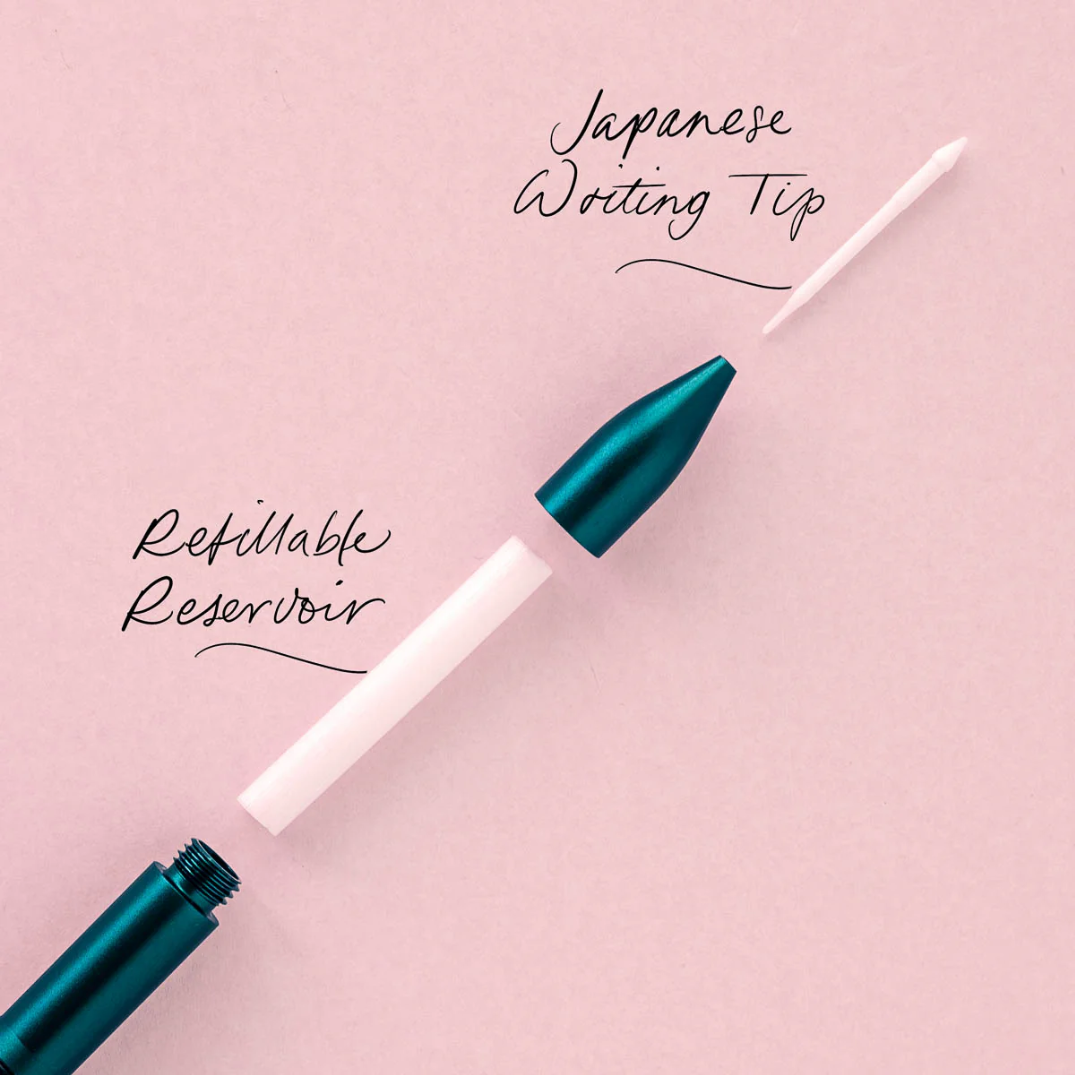
The Wren refillable writing pen, with a Japanese writing tip.
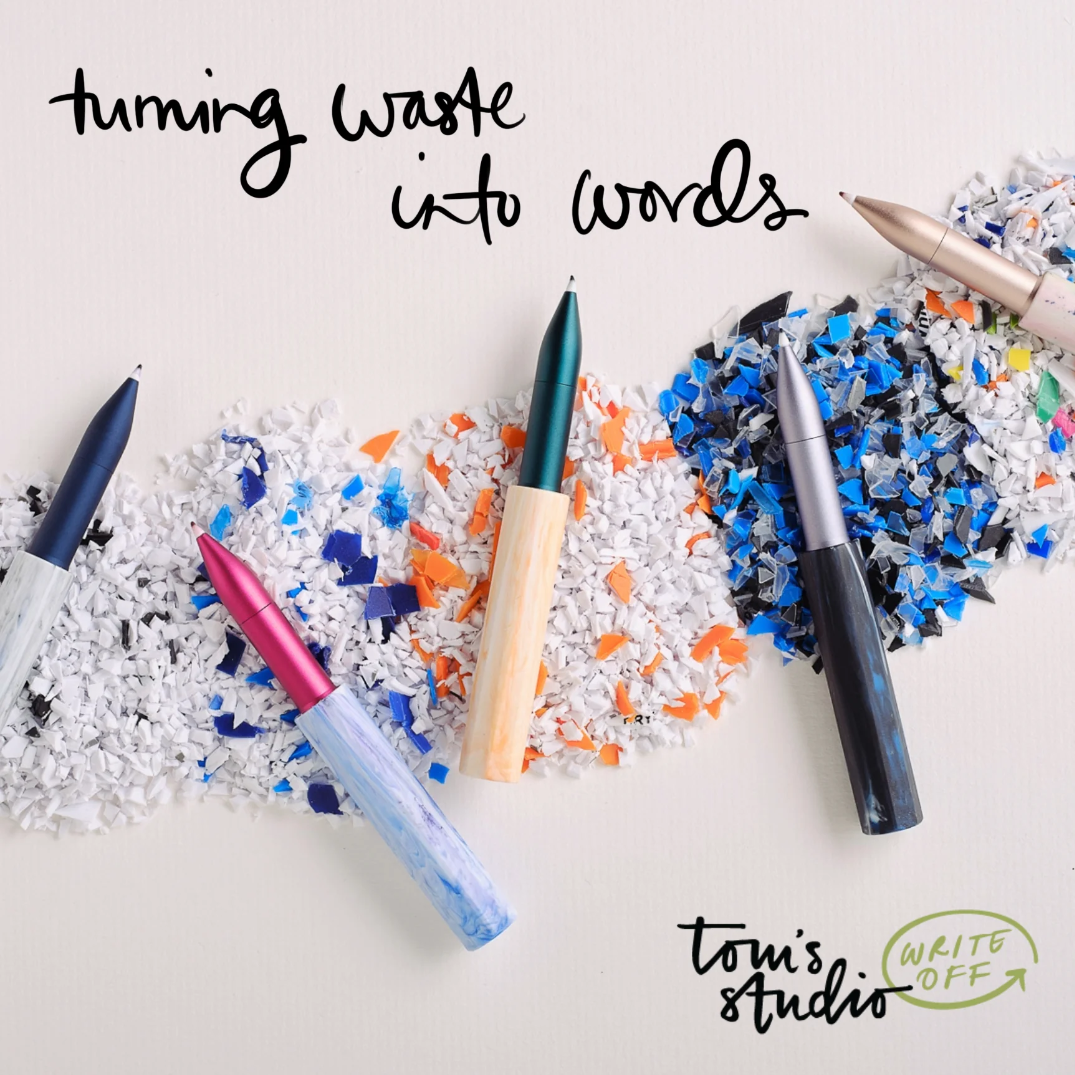
And the Wren Write-Off (made from discarded disposable pens).
Pens Made from Recycled Materials
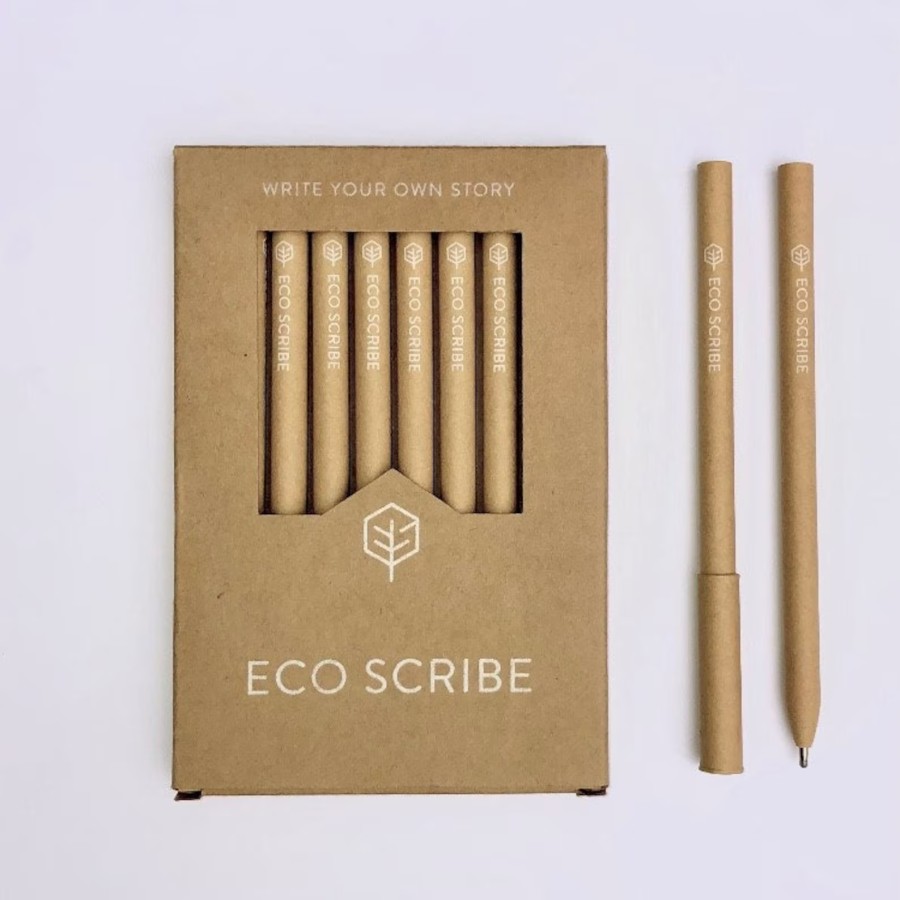
Some pens are made with plastic or paper pulled straight from the waste stream. Eco-conscious brands transform discarded bottles and packaging into useful writing tools.
Why it matters:
- Reduces new plastic production: Less demand for virgin fossil-fuel plastic.
- Uses less energy: Recycling uses fewer resources than making new materials.
- Closes the loop: Keeps waste out of landfills and in the system.
You’ll see brands which uses recycled plastic bottles, or pens with barrels made from reclaimed paper. These pens tend to perform just as well as standard models, with the bonus of a smaller environmental footprint.
This pack of eco-friendly ballpoint pens are made from recycled paper, with medium nibs and comfortable non-slip grip and a smooth even flow writing experience. Sold in a pack of 10 with black ink, the pens are also easy to recycle.
At end of use, just soak the pen in hot water for around 2 minutes. Unravel the paper shaft, remove the stainless steel ink chamber, and recycle all the parts appropriately. Each pen is tightly hand-rolled down to the nib.
Prioritising Sustainability in Everyday Writing
Habits matter just as much as the pen itself. Anyone can write greener with a few simple changes:
- Care for your pens: Store in a cool place, recap after use, and refill promptly.
- Pick refillable first: Make it a rule at home and work.
- Buy in bulk: Pool purchases with classmates or colleagues, to reduce packaging.
- Educate others: Share the benefits of green pens in your groups.
By making sustainable pens part of normal school or office routines, the entire group can shrink their waste without giving up convenience.
Where to Recycle Plastic Pens and Pencils
Terracycle offers a free writing instruments recycling programme, sponsored by industry. Just order a box for your office, school or community then everyone can deposit unwanted pens, pencils, highlighters, correction fluids, felt-tips pens and erasers.
You can also download a poster to display near the recycling box, and all items are sent off to be made into other things (like park benches).
Conclusion
Switching to greener writing pens takes little effort, but offers real rewards. Each refillable, recycled, or biodegradable pen keeps waste out of landfills and slows demand for new plastic. The days of treating pens as throwaway objects are numbered.
The next time you write a note or sign a form, choose a pen that matches your sustainable values. Small steps matter – your green ink can spark a bigger change for the planet. Will your next pen be part of the problem or part of the solution? The choice sits right in your hand.


